The Intel Broadwell Desktop Review: Core i7-5775C and Core i5-5675C Tested (Part 1)
by Ian Cutress on June 2, 2015 7:45 AM ESTProfessional Performance: Linux
Built around several freely available benchmarks for Linux, Linux-Bench is a project spearheaded by Patrick at ServeTheHome to streamline about a dozen of these tests in a single neat package run via a set of three commands using an Ubuntu 11.04 LiveCD. These tests include fluid dynamics used by NASA, ray-tracing, OpenSSL, molecular modeling, and a scalable data structure server for web deployments. We run Linux-Bench and have chosen to report a select few of the tests that rely on CPU and DRAM speed.
Due to our limited testing time and other issues, only the i7-5775C was processed in our Linux tests. These should be updated for Part 2.
C-Ray: link
C-Ray is a simple ray-tracing program that focuses almost exclusively on processor performance rather than DRAM access. The test in Linux-Bench renders a heavy complex scene offering a large scalable scenario.
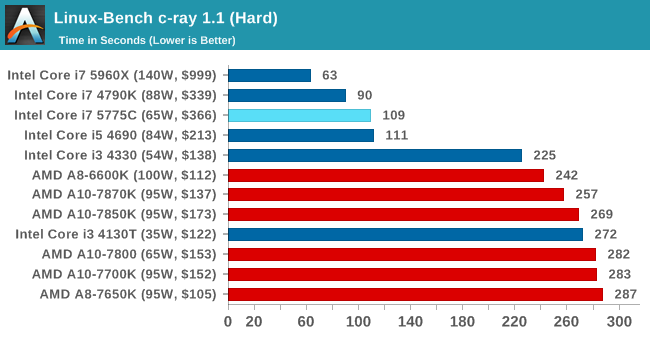
NAMD, Scalable Molecular Dynamics: link
Developed by the Theoretical and Computational Biophysics Group at the University of Illinois at Urbana-Champaign, NAMD is a set of parallel molecular dynamics codes for extreme parallelization up to and beyond 200,000 cores. The reference paper detailing NAMD has over 4000 citations, and our testing runs a small simulation where the calculation steps per unit time is the output vector.
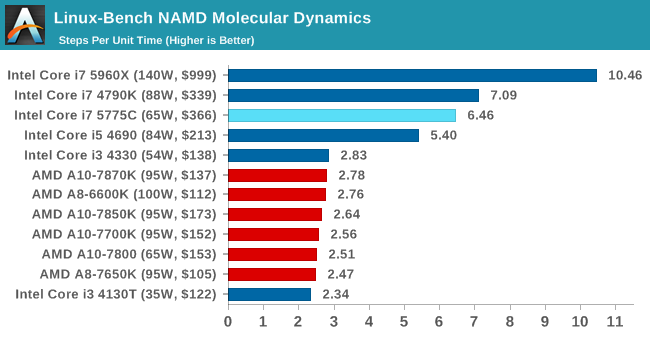
NPB, Fluid Dynamics: link
Aside from LINPACK, there are many other ways to benchmark supercomputers in terms of how effective they are for various types of mathematical processes. The NAS Parallel Benchmarks (NPB) are a set of small programs originally designed for NASA to test their supercomputers in terms of fluid dynamics simulations, useful for airflow reactions and design.
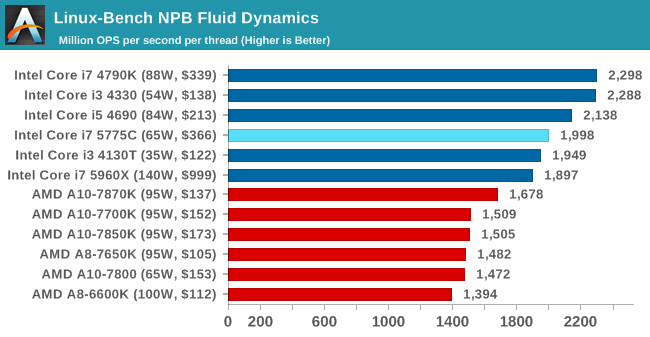
Redis: link
Many of the online applications rely on key-value caches and data structure servers to operate. Redis is an open-source, scalable web technology with a b developer base, but also relies heavily on memory bandwidth as well as CPU performance.
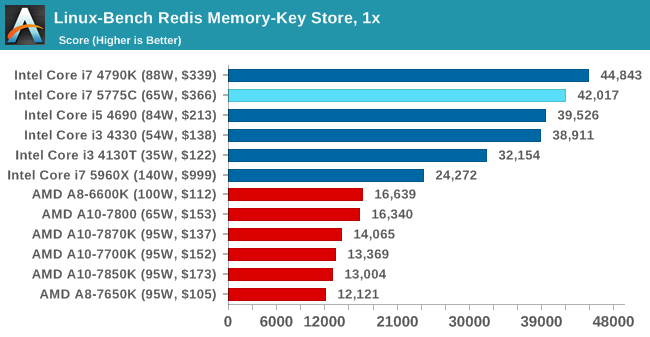
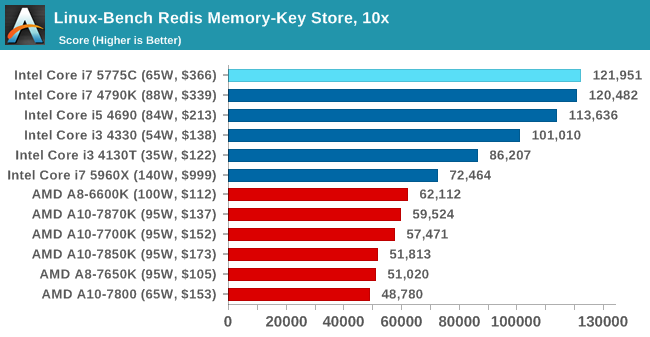
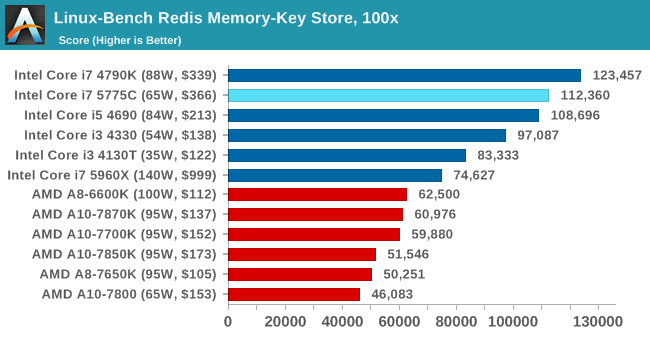










196 Comments
View All Comments
Peichen - Tuesday, June 2, 2015 - link
Intel is ridiculous in what way? You know Skylake is out in 2 months and that's why you are waiting for it. If you think Skylake isn't going to deliver why bother to wait? Intel haven't failed to deliver since Pentium M unlike AMD which is just one dropped ball after another. Sit tight and is gamers will have Skylake in no time. Today's release is for system builders that need a stopgap product, not us.Khenglish - Tuesday, June 2, 2015 - link
Why is the L3 cache only 6MB? Is 2MB disabled, or did intel cut the L3 size to reduce latencies since there is now an L4?Ryan Smith - Wednesday, June 3, 2015 - link
i5 processors typically have some of their L3 cache disabled.HollyDOL - Tuesday, June 2, 2015 - link
First time in years I am not sure what to think about this new cpu... Is it good? Is it delivering? On some things it quite rocks, on other seems like unfinished product/partial release... guess following months will tell...Valantar - Tuesday, June 2, 2015 - link
Just wondering: As previous Iris Pro vs. other integrated graphics reviews have shown Iris Pro to perform substantially worse at higher resolutions, are more tests above 720p coming in part 2? Or are you just going for whatever setting gets reasonably playable frame rates?sonicmerlin - Tuesday, June 2, 2015 - link
Why the frack didn't you test a midrange card at 720p so we can compare it to Iris Pro? They can't even do 30 fps at 1080p on most of the games you tested. What were you thinking?!bobhays - Tuesday, June 2, 2015 - link
On the low end gaming benchmarks for GRID, when benchmarking the r7 240 the minimum FPS for the A10-7700k is higher than the average FPS which doesn't make sense.bobhays - Tuesday, June 2, 2015 - link
Also wish they had tested dual graphics with a r7 240. The A10 ~ 130 + r7 240 ~ 70 = 200. That way we could compare a 200 dollar APU + GPU vs Intels new 200 dollar cpu'sOrphanageExplosion - Wednesday, June 3, 2015 - link
I've tried it with an A8 7650K and I can tell you that the frame-pacing is horrible, and the variance in frame-rate is stupendous. Crysis 3, 720p, low - 60fps looking in one direction, spin around on the spot and you're looking at 20-30fps looking in another direction.ryrynz - Wednesday, June 3, 2015 - link
Might wanna fix up that 128MB eDRAM comment Ian.